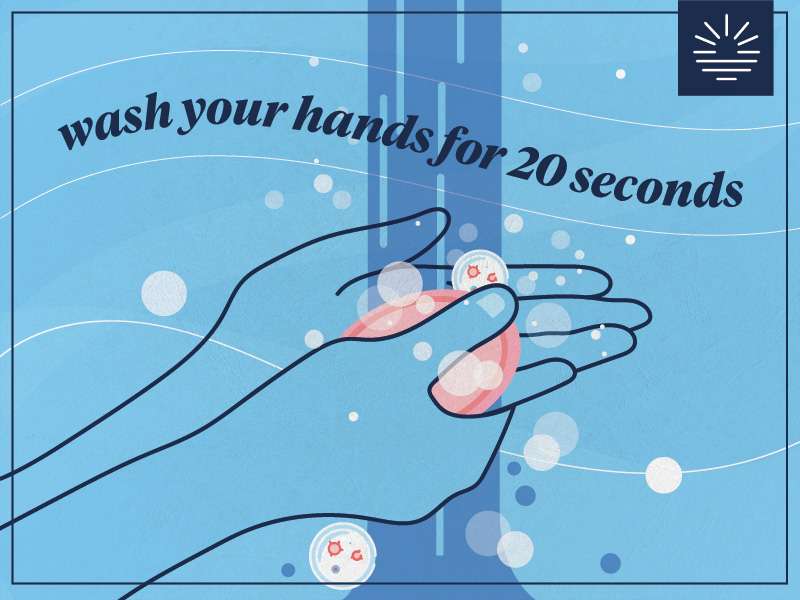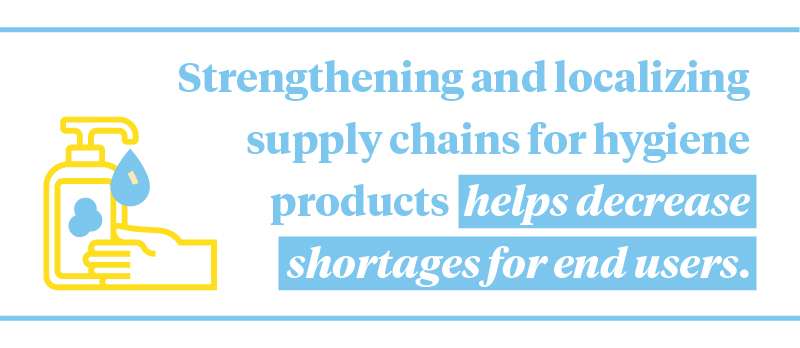
The COVID-19 pandemic has disrupted health systems worldwide, illustrating the need for stronger public health preparedness. Much like Ebola in 2014-2016, the lack of protocols, preparedness, and planning has become apparent, but this time it has been most notable in high income countries in Asia, Europe, and North America.
While the pandemic has yet to spread as widely in developing countries, this eventuality is likely. And just as during the Ebola crisis, the health systems in these countries (with often inadequate supplies and weak information systems) are ill-prepared and ill-equipped to respond to and mitigate immediate first phase spikes, and medium-term subsequent spikes. As medical professionals continue to caution us, the first wave of infections will not be the last.
Immediate- and medium-term needs in developing countries will be twofold: 1) treat patients and 2) mitigate spread. Treating and intubating patients will be primary, and life-saving measures for emergency and health responders (which will require support such as protective gear and ventilators) are necessary. But mitigation and preventative measures will also be key to limiting the spread of COVID-19. While treatment can save hundreds of thousands of lives, mitigation—including basic WASH principles—can save millions.
Effective mitigation in developing countries requires much of the same coordinated efforts as effective mitigation in developed countries, from case identification and mapping to protocols for varying threat levels of public risk (e.g., shelter in place, social distancing, and business closures). Two key areas, explored below, are consistent public health/hygiene-related communications (e.g. handwashing and social distancing) and improved and localized supply chains (e.g., for soap, chlorine, and hand sanitizer) in coordination with the public sector.
Consistent, effective, and concise public health and hygiene communications are vital to preventing the spread of disease globally. Fighting the novel coronavirus will require work with healthcare workers, national and local government officials, and community leaders to engage and mobilize communities to develop and apply consistent messaging and guidance.
An important part of effective messaging includes tailoring outreach by carefully considering at-risk communities and other vulnerable populations and how best to reach them. Public health communication is most effective when it’s delivered through a medium that target groups typically consume and have readily available (from radio to social media to text messaging), with respect to literacy rates and local languages, and with content that resonates with local audiences. Simple, non-technical but medically accurate language and imagery tends to work best.
For instance, this video from Ohio’s Department of Public Health demonstrates the importance of social distancing in a short, visually rich and easily understood presentation. Fraym, a data analytics firm with whom DT Global has partnered, has begun to conduct studies on how to tailor messaging to at-risk groups in developing countries by layering data on risks (such as low access to soap and larger family units) over data on how populations consume news. The intersection of these data sets provides information on how to roll out messaging to at-risk groups.
Hand washing hygiene is one of the most basic and important practices for stopping the spread of any disease, including COVID-19. Effective health messaging around hygiene is critical, but can only go so far if key hygiene products are unavailable to consumers. Indeed, apart from healthcare worker protective gear, the three most important products for COVID-19 preparedness are soap, hand sanitizer, and chlorine.

The private sector has a key role to play in supporting disease mitigation through coordinated production and distribution of these products. But distant supply chains that produce soap, hand sanitizer, and chlorine can become disrupted during pandemics like COVID-19. Working with private sector partners to strengthen and localize supply chains for these hygiene products will help to decrease shortages and lag times for end users, so that they can immediately put to use public messaging calls-to-action. This can be done by working with global private sector partners that already have large, efficient networks in developing economies, as well as by working with local businesses to ramp up local production.
Building and supporting local soap producers can prove critical when international supply chains are cut. Similarly, localized production of hand sanitizer is estimated to reduce the at market cost per unit by 50% or more, and the CDC has developed a model and protocols to produce hand gel/sanitizer through Ministries of Health and/or local private sector partners. Finally, chlorine is the most cost-effective solution for cleaning and disinfecting water and surfaces (both at health facilities and in communities) worldwide. Local chlorine production (using only common salt as a consumable) is a game changer for infection prevention and care, and hygiene, especially in low-resource settings.
By introducing production units for these three products in every corner of the world and focusing targeted messaging to key groups to put these products into action, it is possible to mitigate the spread of COVID-19. While this is a new virus with new challenges, applying basic and well-delivered WASH principles can save lives.